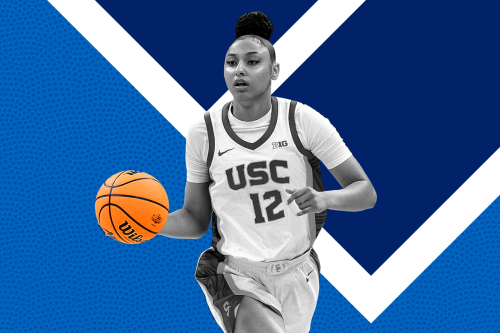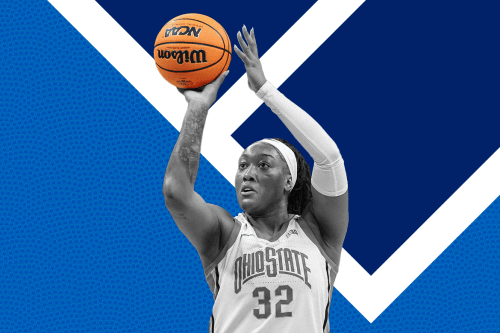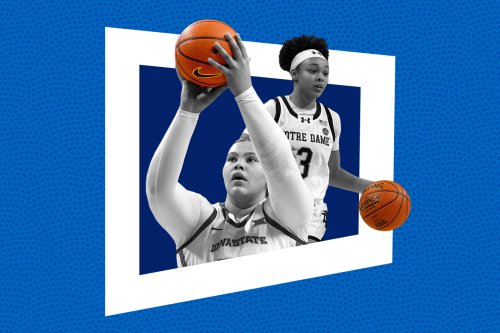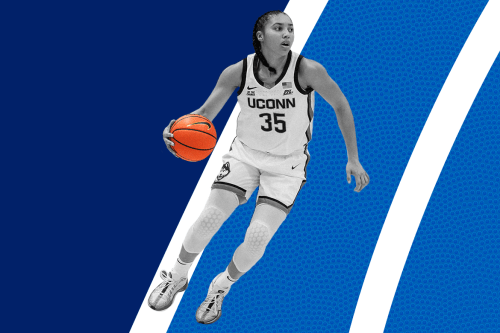When the ‘female athlete triad’ is overlooked, women in sports get hurt
The female athlete triad is rarely talked about, but according to a sports medicine doctor, that needs to change in professional sports—and beyond.

Despite the fact that women are conquering world championships and demanding the salaries they deserve, they’re still so often maltreated by the coaches and medical professionals whose job is to care for them. Elite runner Mary Cain—who became the youngest American track and field athlete to represent the U.S. on a World Championships team at age 16—is speaking out on behalf of every female body in professional sports.
In an opinion piece published Thursday by the New York Times, Cain details the alleged abuse and negligent care—including intense pressure to lose weight—she says she experienced under the coaching of Alberto Salazar at Nike’s Oregon Project.
“[W]hen young women are forced to push themselves beyond what they’re capable of at their given age, they’re at risk for developing RED-S,” says Cain in a video for the New York Times. RED-S, or Relative Energy Deficiency in Sports syndrome, occurs when athletes burn through more energy than they’re getting from food. The condition affects menstrual function, immunity, psychological well-being, and bone health. “Suddenly, you realize you’ve lost your period for a couple months. Then a couple months becomes a couple years. In my case, it was a total of three. And if you’re not getting your period, you’re not going to be able to have the necessary levels of estrogen to maintain strong bone health. And in my case, I broke five different bones.”
Gold Medal Couple Tara Davis-Woodhall and Hunter Woodhall Talk Marriage, Motivation, and Their Next Chapter With Nike

Coach Kara Lawson Wants You to ‘Handle Hard Better’—and Here Are 3 Ways to Do Just That

JuJu Watkins Leaves March Madness With ACL Tear—and This Knee Injury Is More Common Than You Think

Sports medicine doctor Jordan Metzl, MD, points out that Cain’s injuries fit the female athlete triad, which presents as amenorrhea, low energy, and/or decreased bone mineral density. Studies have estimated that up to 26.6 percent of female athletes exhibit components of the triad. Any medical professional or coach should have the knowledge to recognize and adjust training when these symptoms arise in their athletes, says Dr. Metzl.
“Every athlete is different, and it’s important to be responsive to the things that athletes are telling you,” says Dr. Metzl. “Women are more likely [than men] to get knee injuries. They’re about five or six times more likely to get ACL injuries. They’re more likely to get stress fractures.” Women who experience amenorrhea over an extended period of time can develop an estrogen deficiency that may lead to a decreased bone marrow density.
Cain says she learned this biology lesson “the hard way”—with broken bones. But she shouldn’t have had to learn anything “the hard way.” Dr. Metzl suggests that even before Cain’s very first injury, the medical professionals in her corner should have recognized the restrictive diet’s negative effects on her body, and adjusted her training and caloric intake accordingly.
“As a sports medicine doctor, I see all kinds of athletes of all different ages in all different sports—and every sport has their issues. In running, it’s overuse injuries,” says Dr. Metzl. The job of the athlete is to communicate when her body isn’t responding well to training procedures; the coach’s job is to listen and adjust the plan accordingly. “The big issue here is just being a good listener, and having a climate where your body’s being respected.”
Cain didn’t find herself in a place where her needs were being met, and it makes me wonder: if the young runner had approached her team as a man, would they have listened to her protests? Would they have decided to adjust her nutrition and training plan? It’s impossible to know. But Cain’s decision to share her experience is the spotlight we needed to illuminate something so often overlooked.
The gender pay gap in sports still needs to be addressed. And here’s why female body builders feel beautiful through strength.
Sign Up for Our Daily Newsletter
Get all the latest in wellness, trends, food, fitness, beauty, and more delivered right to your inbox.
Got it, you've been added to our email list.







